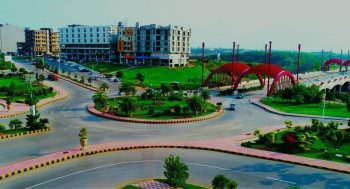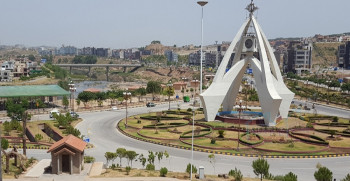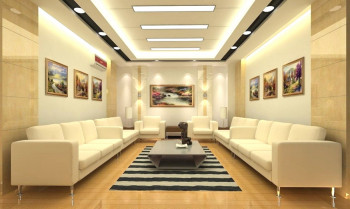A Look into The Grand Pakistan Monument in Islamabad
The Pakistan Monument is a petal-shaped granite structure national monument nestled in the western Shakarparian Hills in Islamabad. The glorious monument was built to symbolize the unity and patriotism of Pakistanis. It also pays tribute to the martyrs who sacrificed their lives for the sake of our homeland and its people.
The architecture of the magnificent dome-shaped monument reflects our history, culture, and heritage. It is one of Islamabad’s most visited attractions due to its picturesque location and unique architecture. Because of its high location, it is visible from the twin cities of Islamabad and Rawalpindi. Not only does it provide an insight into the Pakistani heritage, but one also gets to observe and reflect on the city of Islamabad move below.
Here are some interesting facts and details about the National Monument you must know about.
1. History and Conception
In 2002, the former President of Pakistan Pervez Musharraf proposed to create a national monument in Islamabad. The foundation stone was laid in 2004, after which President Musharraf assigned the Ministry of Culture to collaborate with the Pakistan Council of Architects and Town Planners and organize a design competition for the landmark.
The theme and concept were to signify the strength, unity, and dedication of the people of Pakistan. Twenty different architects from all over Pakistan sent in their proposals off of which the council short-listed three. Finally, Mr. Arif Masoud had the privilege of designing the Pakistan Monument.
Under the supervision of Engineer Syed Mahmud Khalid, the glorious Pakistan Monument was completed in 2006. On 23rd March 2007, the inauguration ceremony was held and the Pakistan Monument was open for the public to enjoy.
2. Design and Architecture

The Monument is built on around 2.8 hectares (6.9 acres) of land and the Mughal architecture inspires its design - the dome-shaped structure is taken from the Mughal muqarnas. What we see in the landmark is a mixture of history and technology, as it is a refined and modernized version of the Mughal muqarnas.
The design of the Monument represents unity and solidarity among the people of Pakistan. It comprises two main structures – the monument and the museum. The blooming flower-like structure consists of seven petals in total. The four main petals depict the different provinces and cultures of Pakistan – Punjab, Sindh, Balochistan, Khyber Pakhtunkhwa. Whereas the smaller petals highlight the minorities, Gilgit Baltistan, Azad Jammu, and Kashmir.
The grand structure is made up of granite that was imported from Brazil and marble imported from Spain. The inner walls of the petals are crafted with impressive artwork. They illustrate several landmarks of Pakistan, such as Minar-e-Pakistan, Khyber Pass, Badshahi Mosque, and the story of the independence of Pakistan.
2.1. Detailing and Carvings

You can admire the beauty of Faisal Mosque in Islamabad, Shah Jahan Mosque in Thatta, Makli Necropolis in Sindh, the port city of Gawadar and the detailing of the Rohtas Fort near Jhelum looking at the first petal of the National Monument.
The second petal beautifully illustrates images of our founder Muhammad Ali Jinnah along with Mother of the Nation Fatima Jinnah and the historical landmarks of Pakistan. Lastly, it features a crowd cheering at one of Quaid-e-Azam's appearances.
The third petal comprises images of Allama Iqbal - our national poet, the Mahabat Khan Mosque, Tomb of Shah Rukn-e-Alam, the Lahore Fort and the Indus valley civilization.
Lastly, the artwork on the fourth petal reflects images of the famous Sheesh Mehal, the Uch Sharif Tomb, Islamia College Peshawar, the Ziarat residency, the Khyber Pass, and a few other magnificent places in Pakistan.
If you look closely, you’ll see how the illustrations on each of these petals depict a story about Pakistan. Around 119,000 hours of dedicated effort went into the creation of these petals by a team of talented artists led by Kausar Jahan and Zarar Haider Babri.
2.1.1. Special Features

The monument has several other features, including the four pillars that display Quaid-e-Azam's motto ‘Unity, Faith, Discipline’ in English as well as Urdu. From the center of the monument, a large fountain emerges, making it a splendid sight for the visitors. Next to it, you can find a wall dedicated to everyone responsible for the construction of the monument – it holds handprints of architects, engineers, designers, and labor involved. The name of the chief architect Arif Masoud is inscribed in stone at the entrance of the main Piazza.
Adjacent to the monument, there is a beautiful terrace with circular entrances that provide a 360-degree view of the entire city. The Pakistan Monument is a wonderful place to visit due to its architecture; the location is an added bonus.
3. Pakistan Monument Museum

The second half of the grand Pakistan Monument consists of the Pakistan Monument Museum, also known as the Islamabad Museum. The heritage museum houses several paintings, wax statues of our historical figures, and other historical images. It chronological representation of our history starting from 7000 BC to 1947.
It gives a deeper understanding of the start of Islam, the Mughal era, pre-partition history to the Pakistan movement, and the major events that lead to the partition of the subcontinent. The museum pays homage to the lives involved in fighting for a separate homeland for the Muslims residing in the subcontinent.
Anyone who’s looking for old national records, historical speeches, books, and manuscripts can visit the reference library that has an Audio-Visual Center. Moreover, the museum has a conference hall and a Panorama Hall (auditorium) that can accommodate sixty-two people.
If you plan on going to the Pakistan Monument, do visit the Pakistan Monument Museum.
The timings are given below:
10:00 AM to 8:00 PM (Weekly holiday on Monday)
Contact number: 051-9249200
Ticket price: 20 rupees
I highly recommend everyone coming to Islamabad to plan a trip to this beautiful landmark and cherish its beautiful architecture and view.
For more information on popular tourist attractions and landmarks of Pakistan, head over to Gharbaar Blog.?

Content












Join our growing community
Subscribers
Youtube
Twitter
Instagram
Facebook